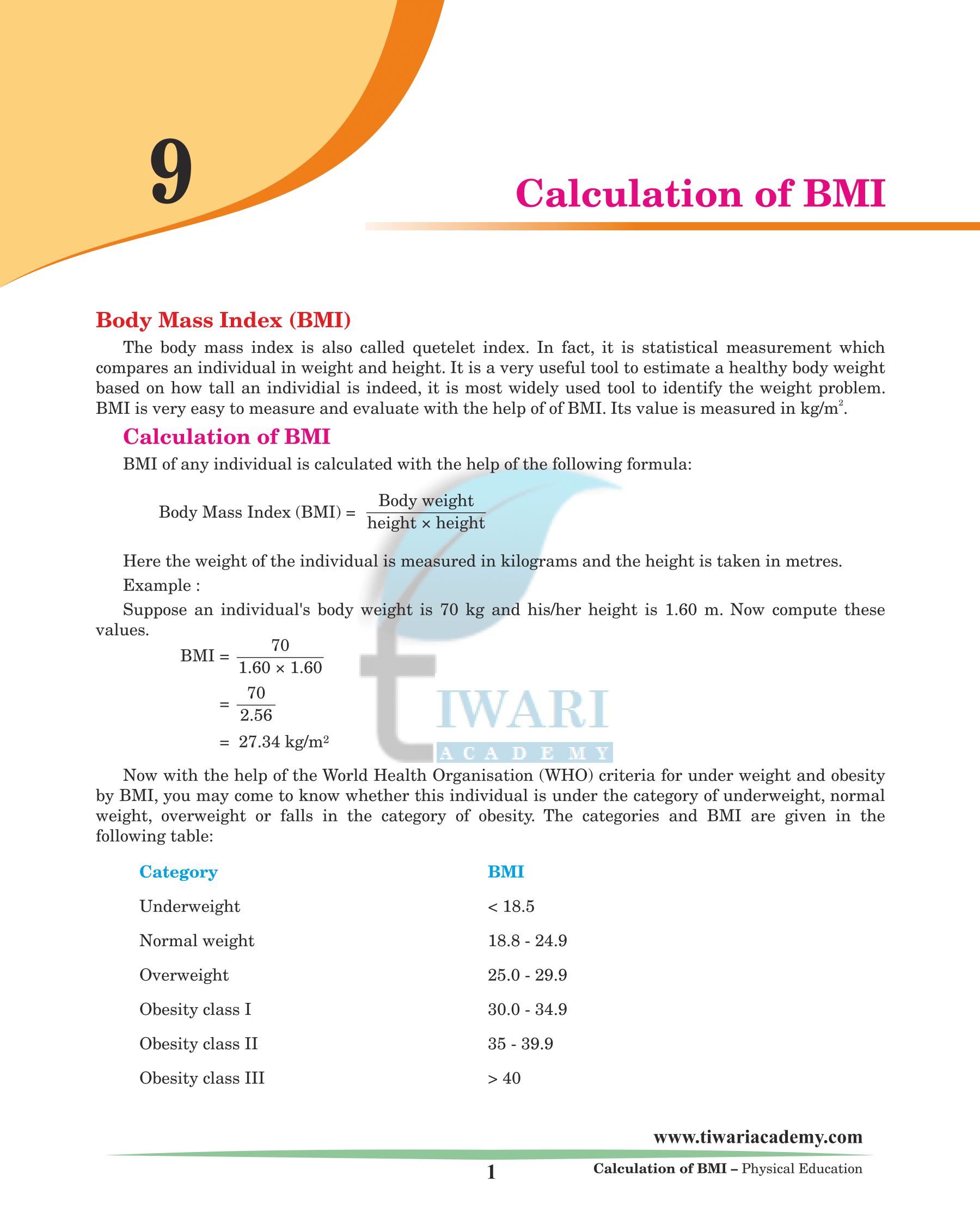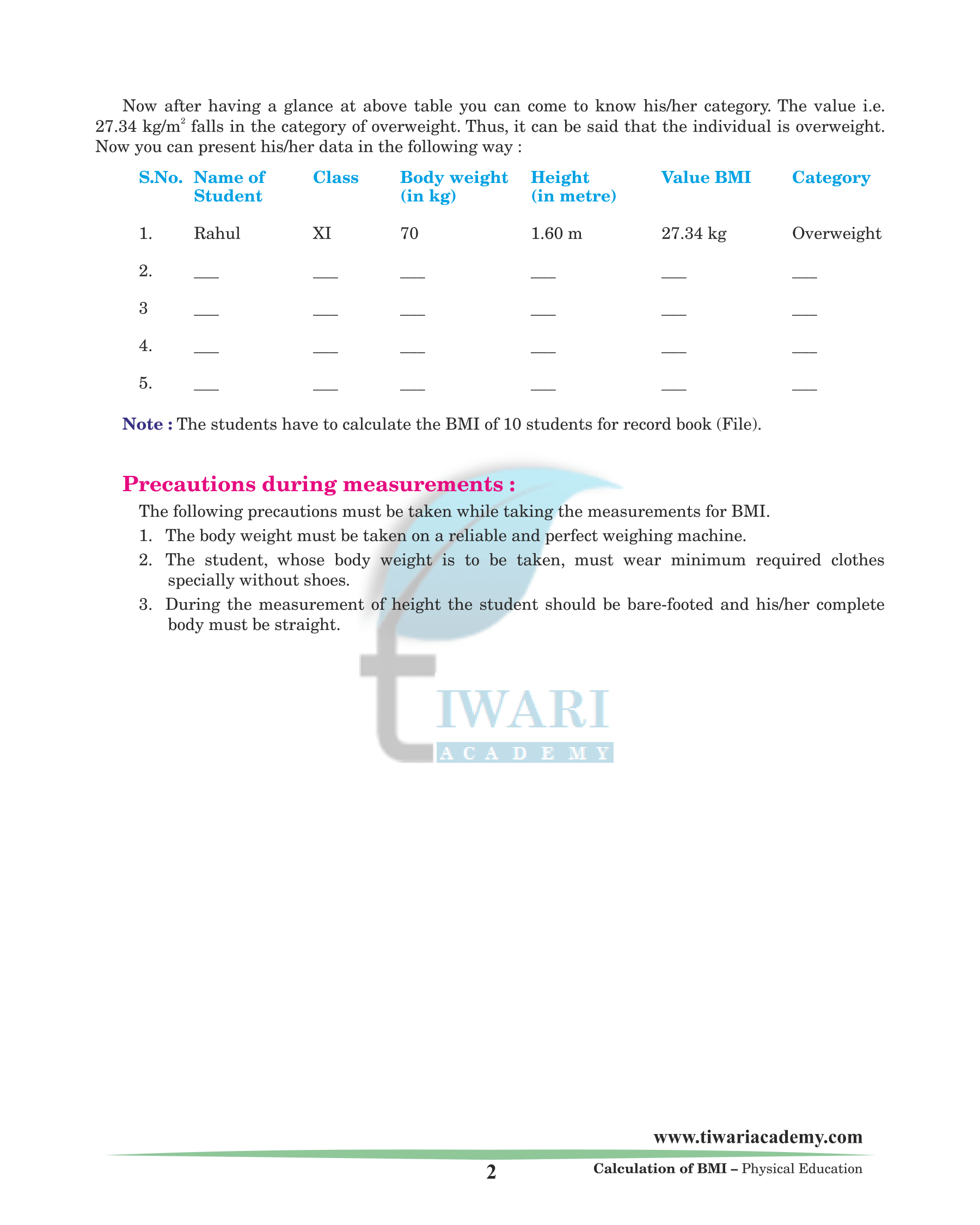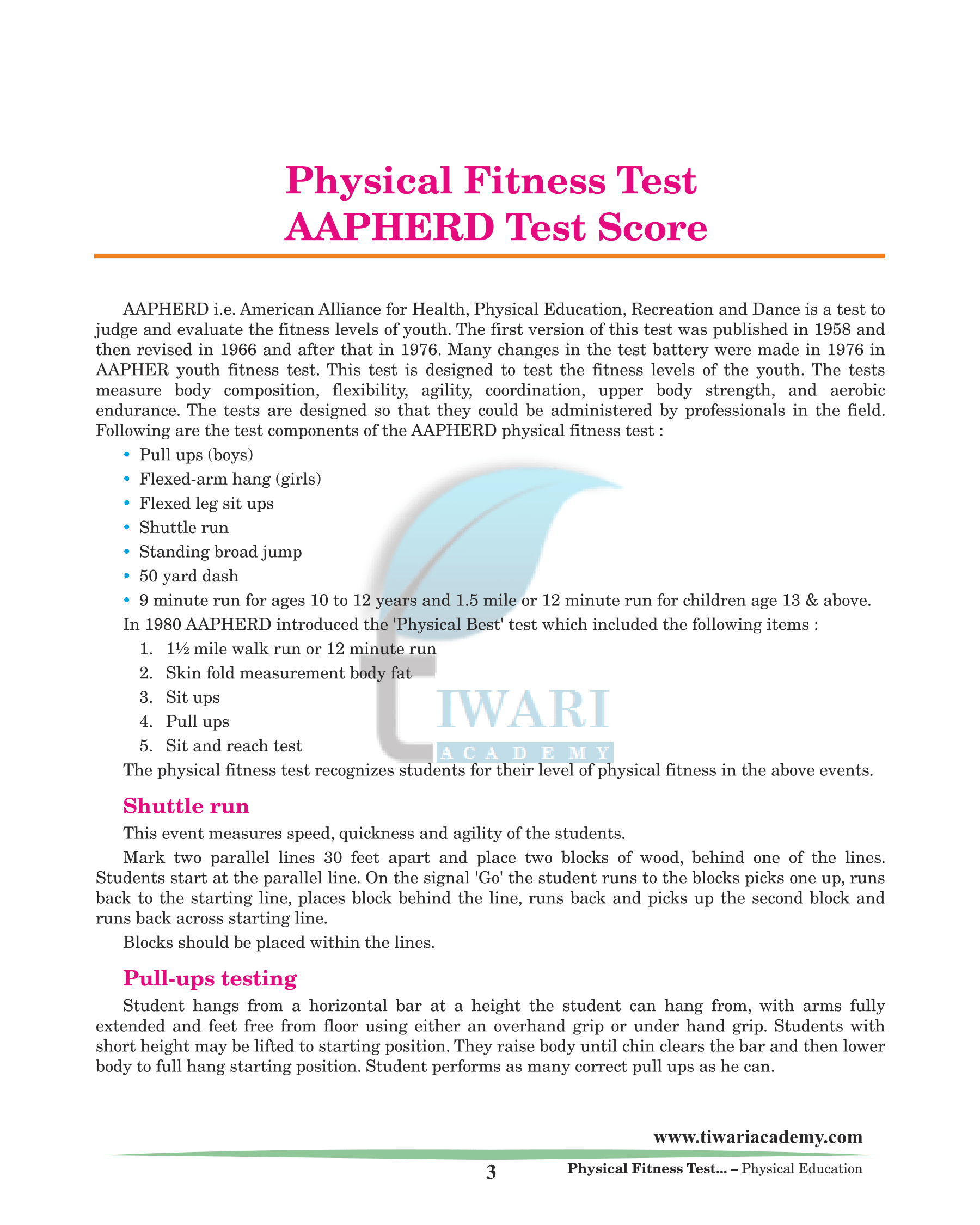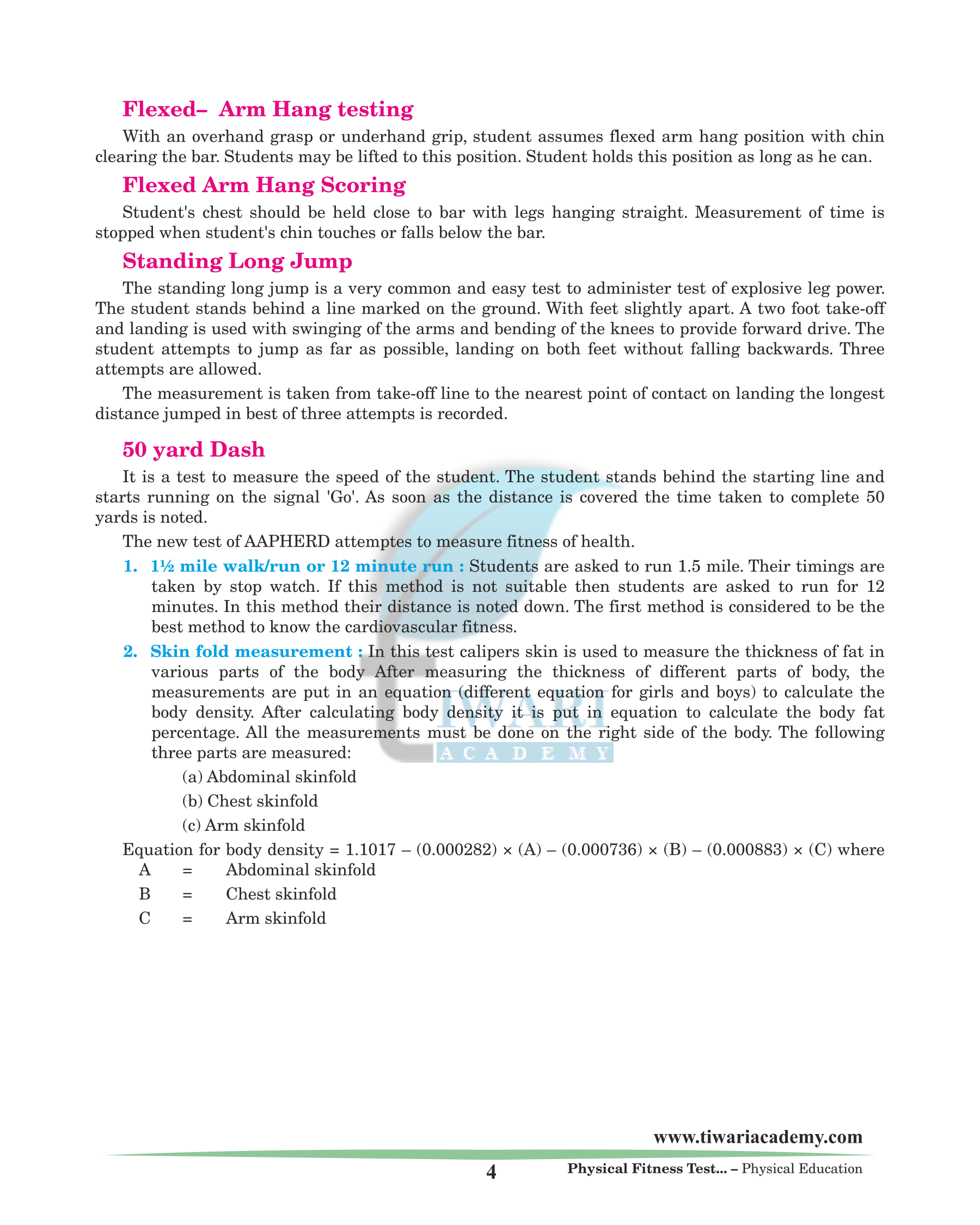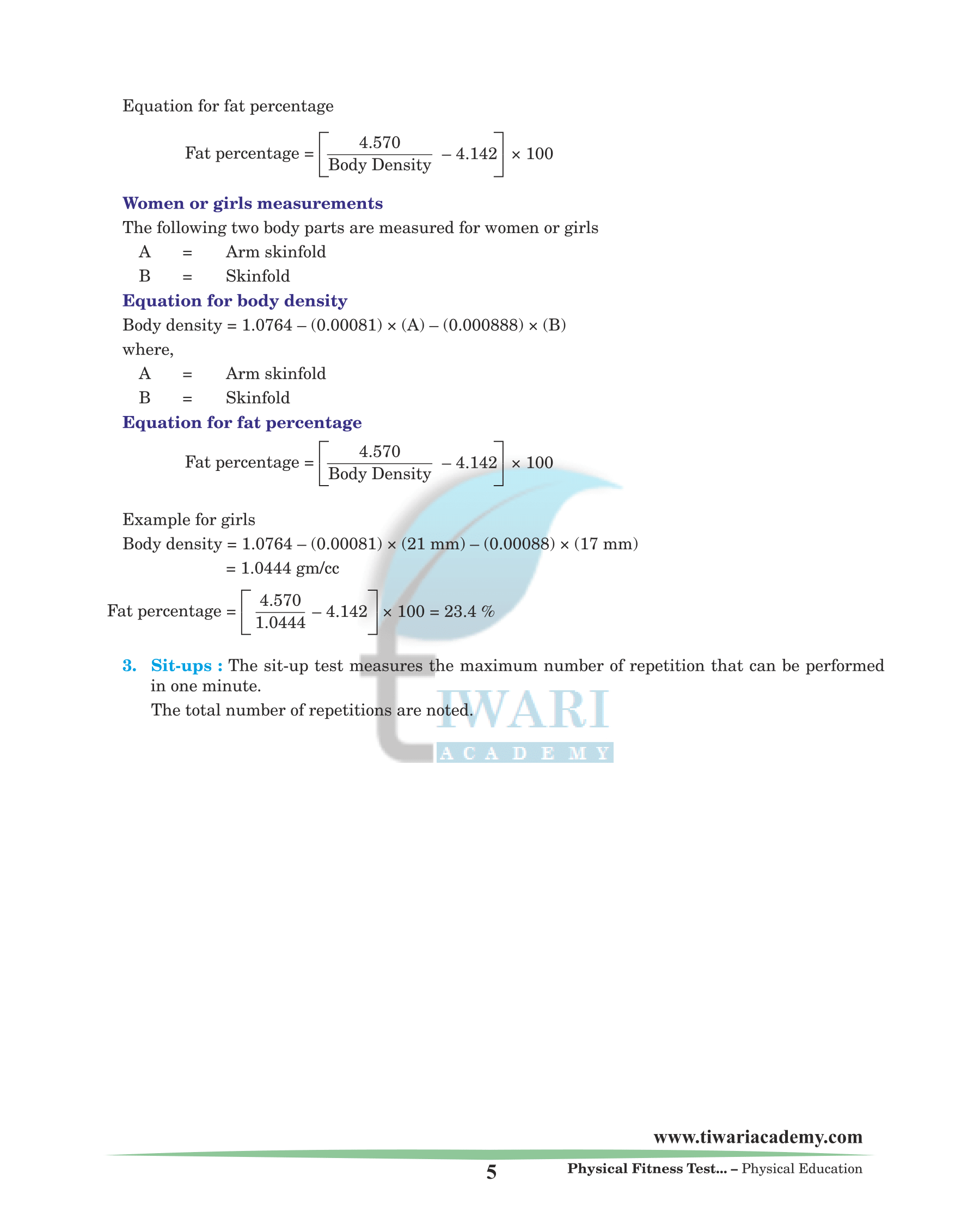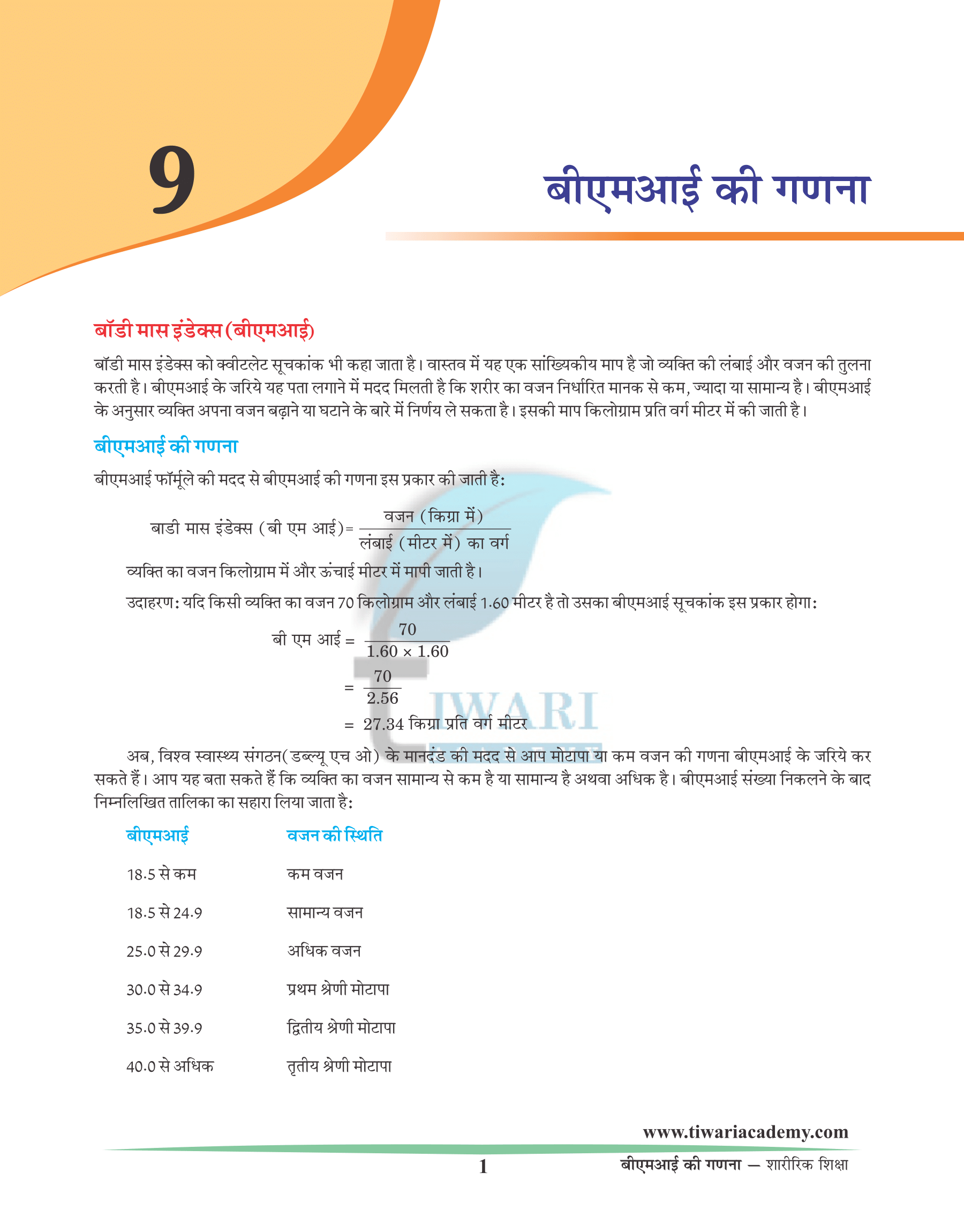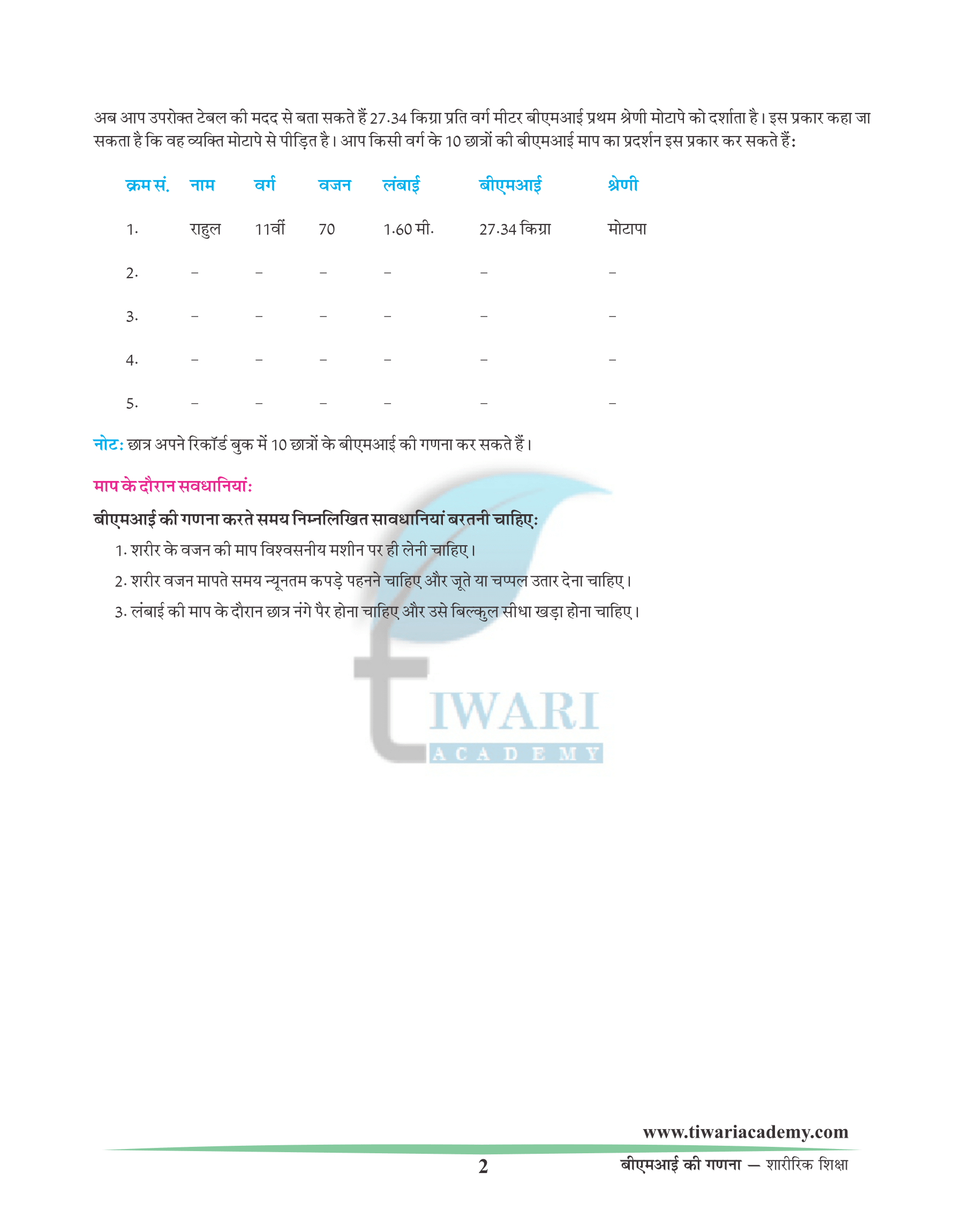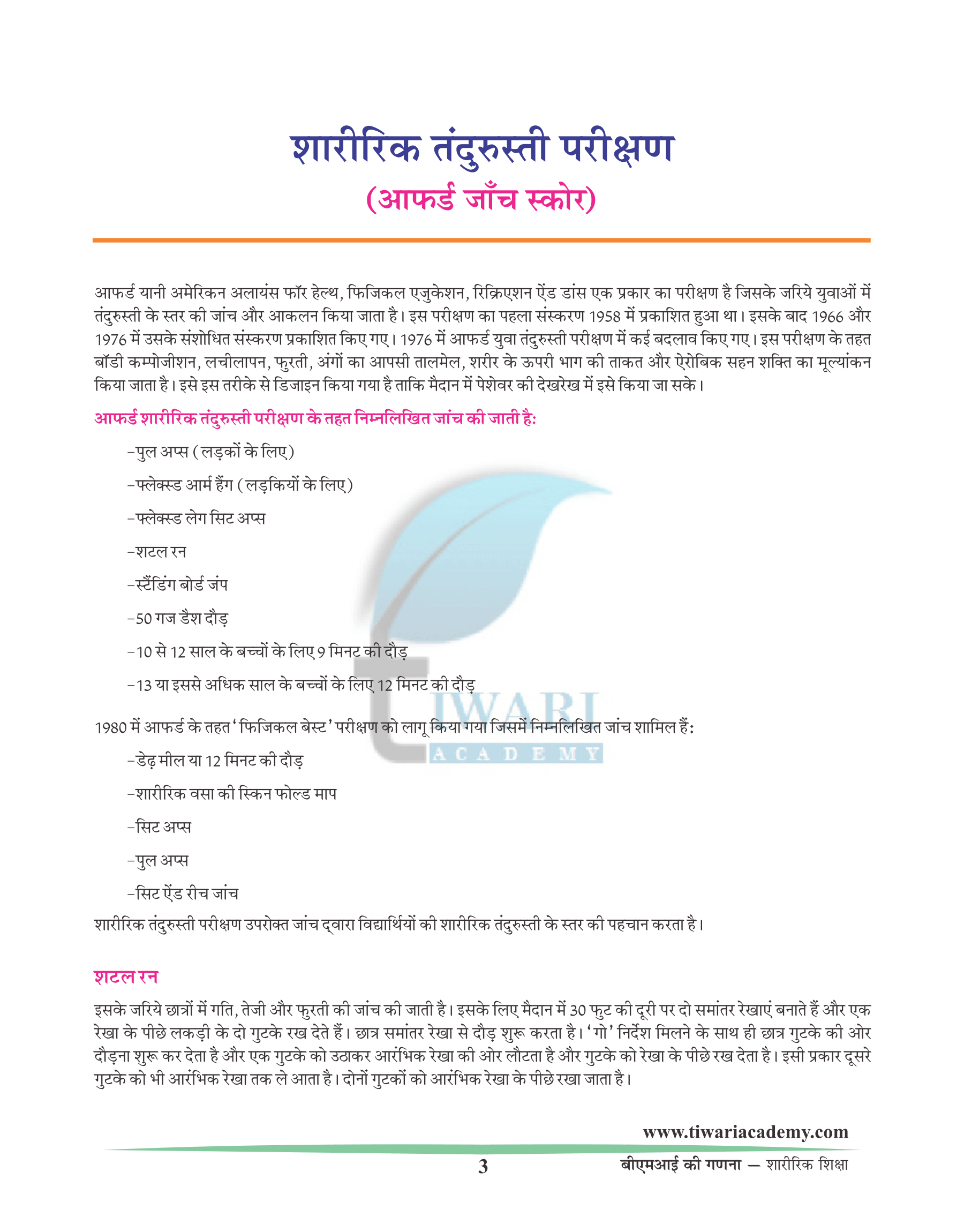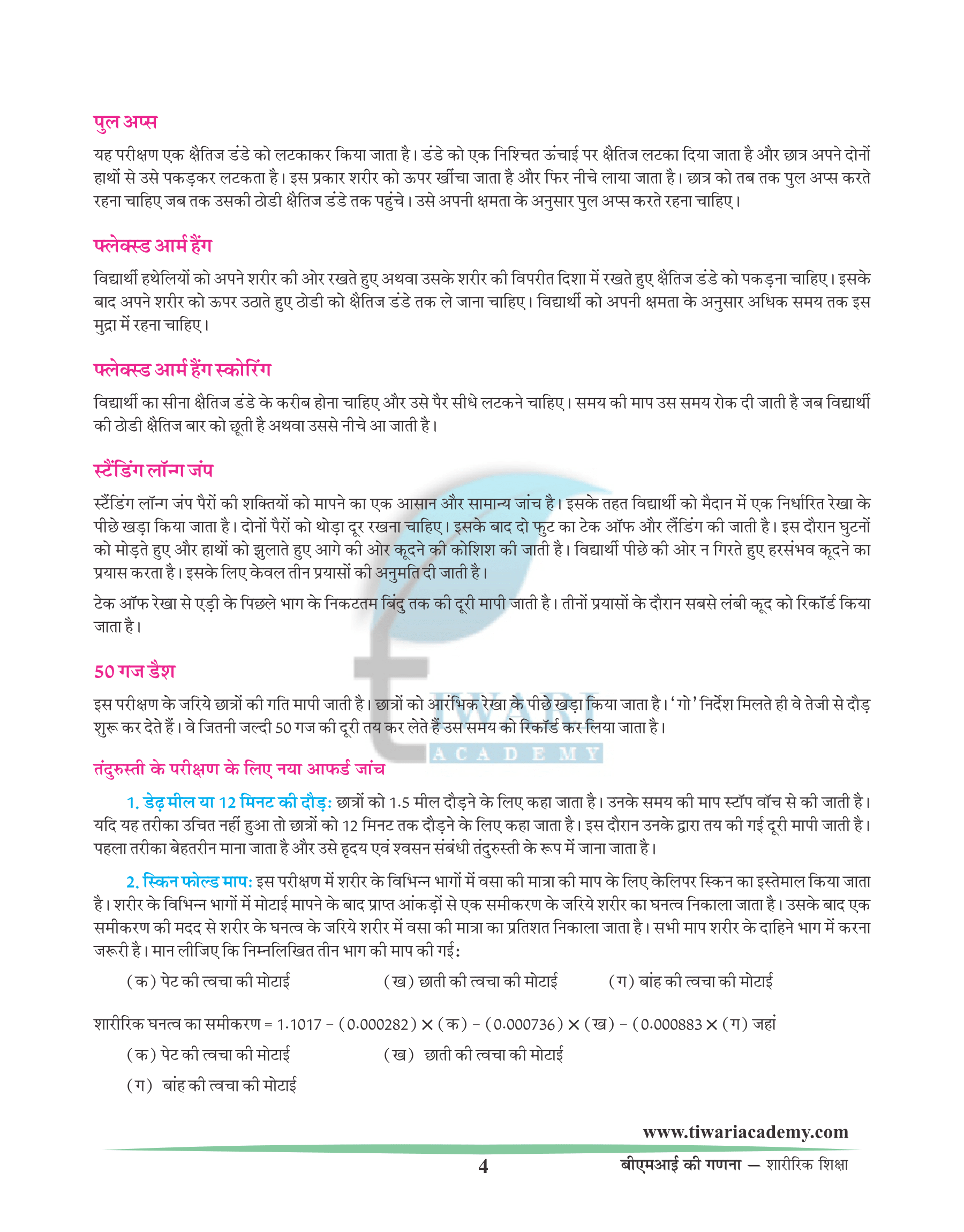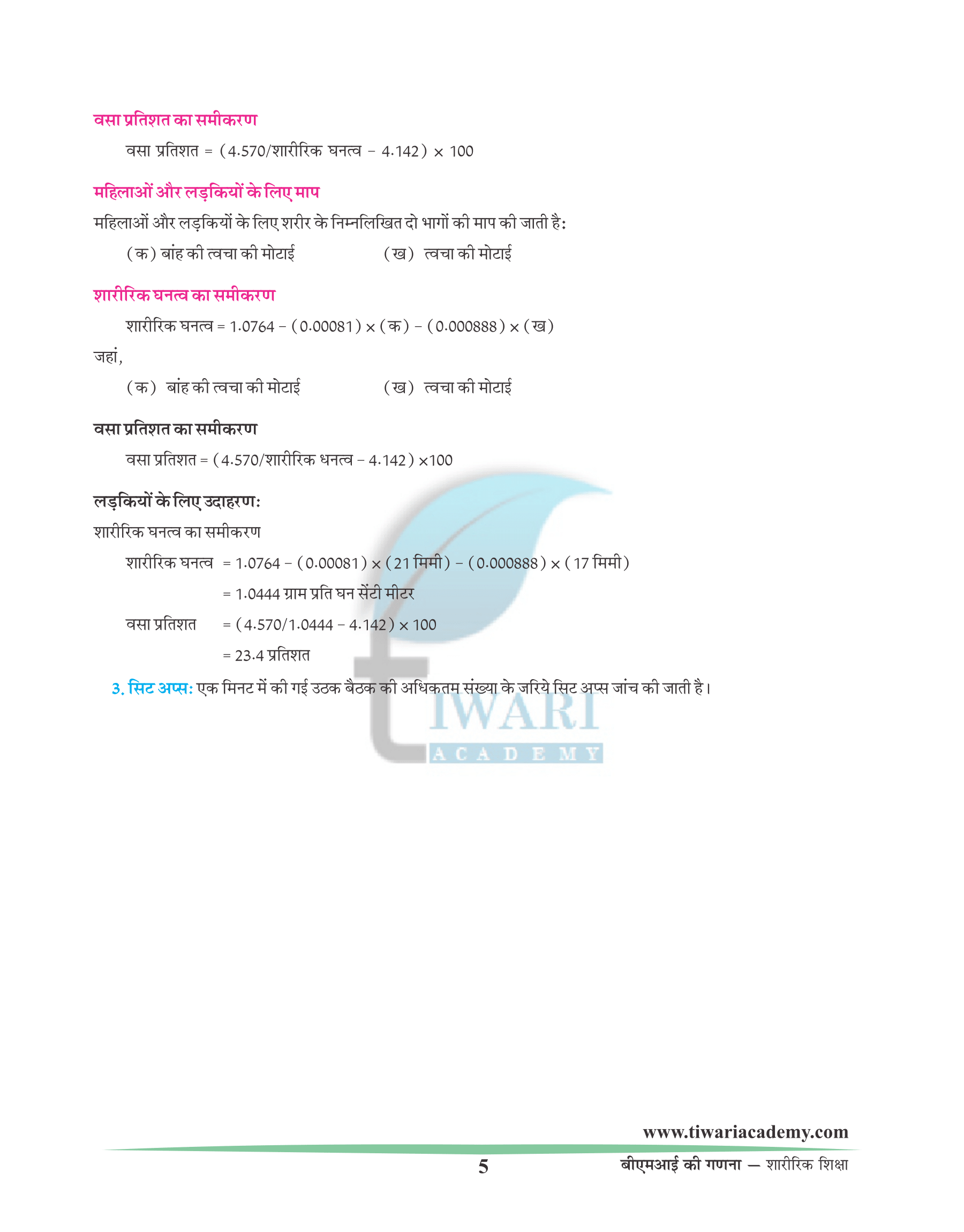The body mass index is also called the Quetelet index. It is a statistical measurement which compares an individual in weight and height. It is a handy tool to estimate a healthy body weight based on how tall an individual is accurate, and it is most widely used tool to identify the weight problem. 2 BMI is straightforward to measure and evaluate with the help of BMI. Its value is measured in kg/m2.
What is Body Mass Index – BMI?
Criteria for underweight and obesity by BMI
Now with the help of the World Health Organisation (WHO) criteria for underweight and obesity by BMI, you may come to know whether this individual is under the category of underweight, average weight, overweight or falls in the category of obesity.
Calculation of BMI
BMI of any individual is calculated with the help of the following formula:
Body Mass Index (BMI) = Body weight / (height × height)
Here the weight of the individual is measured in kilograms and the height is taken in metres.
Example:
Suppose an individual’s body weight is 70 kg and his/her height is 1.60 m. Now compute these values.
BMI = 70 / (1.60 x 1.60) = 70 / 2.56 = 27.34 kg/m2
Now with the help of the World Health Organisation (WHO) criteria for underweight and obesity
by BMI, you may come to know whether this individual is under the category of underweight, normal
weight, overweight or falls in the category of obesity.
The categories and BMI are given in the following table:
| Category | BMI |
|---|---|
| Underweight | < 18.5 |
| Normal weight | 18.8 – 24.9 |
| Overweight | 25.0 – 29.9 |
| Obesity class I | 30.0 – 34.9 |
| Obesity class II | 35 – 39.9 |
| Obesity class III | > 40 |
Precautions during measurements
The following precautions must be taken while taking the measurements for BMI.
- The body weight must be taken on a reliable and perfect weighing machine.
- The student, whose body weight is to be taken, must wear minimum required clothes specially without shoes.
- During the measurement of height the student should be bare-footed and his/her complete body must be straight.
Physical Fitness Test (AAPHERD Test Score)
AAPHERD i.e. American Alliance for Health, Physical Education, Recreation and Dance is a test to judge and evaluate the fitness levels of youth. The first version of this test was published in 1958 and then revised in 1966 and after that in 1976. Many changes in the test battery were made in 1976 in AAPHER youth fitness test. This test is designed to test the fitness levels of the youth. The tests measure body composition, flexibility, agility, coordination, upper body strength, and aerobic endurance. The tests are designed so that they could be administered by professionals in the field.
Following are the test components of the AAPHERD physical fitness test:
- Pull ups (boys)
- Flexed-arm hang (girls)
- Flexed leg sit ups
- Shuttle run
- Standing broad jump
- 50-yard dash, 9 minute run for ages 10 to 12 years and 1.5 mile or 12 minute run for children age 13 & above.
In 1980 AAPHERD introduced the ‘Physical Best’ test which included the following items:
1. 1½ mile walk run or 12-minute run
2. Skin fold measurement body fat
3. Sit ups
4. Pull ups
5. Sit and reach test
The physical fitness test recognizes students for their level of physical fitness in the above events.
Shuttle run
This event measures speed, quickness and agility of the students. Mark two parallel lines 30 feet apart and place two blocks of wood, behind one of the lines. Students start at the parallel line. On the signal ‘Go’ the student runs to the blocks picks one up, runs back to the starting line, places block behind the line, runs back and picks up the second block and runs back across starting line. Blocks should be placed within the lines.
Pull-ups testing
Student hangs from a horizontal bar at a height the student can hang from, with arms fully extended and feet free from floor using either an overhand grip or under hand grip. Students with short height may be lifted to starting position. They raise body until chin clears the bar and then lower
body to full hang starting position. Student performs as many correct pull ups as he can.
Flexed– Arm Hang testing
With an overhand grasp or underhand grip, student assumes flexed arm hang position with chin clearing the bar. Students may be lifted to this position. Student holds this position as long as he can.
Flexed Arm Hang Scoring
Student’s chest should be held close to bar with legs hanging straight. Measurement of time is stopped when student’s chin touches or falls below the bar.
Standing Long Jump
The standing long jump is a very common and easy test to administer test of explosive leg power. The student stands behind a line marked on the ground. With feet slightly apart. A two-foot take-off and landing is used with swinging of the arms and bending of the knees to provide forward drive. The student attempts to jump as far as possible, landing on both feet without falling backwards. Three attempts are allowed. The measurement is taken from take-off line to the nearest point of contact on landing the longest distance jumped in best of three attempts is recorded.
50-yard Dash
It is a test to measure the speed of the student. The student stands behind the starting line and starts running on the signal ‘Go’. As soon as the distance is covered the time taken to complete 50 yards is noted.
The new test of AAPHERD attempts to measure fitness of health:
1. 1½ mile walk/run or 12-minute run
Students are asked to run 1.5 mile. Their timings are taken by stop watch. If this method is not suitable then students are asked to run for 12 minutes. In this method their distance is noted down. The first method is considered to be the best method to know the cardiovascular fitness.
2. Skin fold measurement:
In this test calipers skin is used to measure the thickness of fat in various parts of the body After measuring the thickness of different parts of body, the measurements are put in an equation (different equation for girls and boys) to calculate the body density. After calculating body density, it is put in equation to calculate the body fat percentage. All the measurements must be done on the right side of the body.
The following three parts are measured:
(a) Abdominal skinfold
(b) Chest skinfold
(c) Arm skinfold
Equation for body density = 1.1017 – (0.000282) × (A) – (0.000736) × (B) – (0.000883) × (C) where
A = Abdominal skinfold
B = Chest skinfold
C = Arm skinfold
Equation for fat percentage
Fat percentage = [4.570/Body Density – 4.142] x 100
Women or girls measurements
The following two body parts are measured for women or girls
A = Arm skinfold
B = Skinfold
Equation for body density
Body density = 1.0764 – (0.00081) × (A) – (0.000888) × (B), Where A = Arm skinfold, B = Skinfold
Equation for fat percentage
Fat percentage = [4.570/Body Density – 4.142] x 100
3. Sit-ups
The sit-up test measures the maximum number of repetition that can be performed in one minute. The total number of repetitions are noted.
